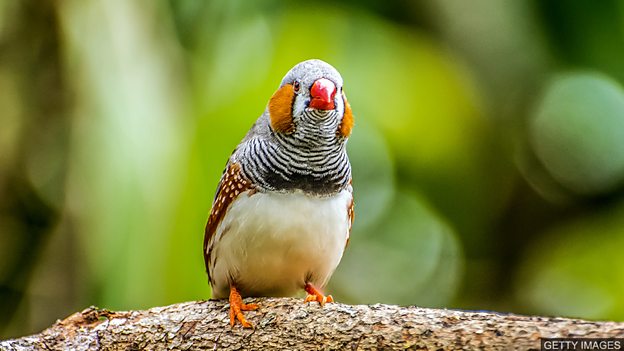一项对鸣鸟解决问题能力的测试揭示了交通噪音是如何损害这些动物的能力的。科学家们给珍珠鸟设计了一组 “觅食任务”,分别在有噪音和无噪音的环境下进行。
Rather than studying birds in the wild, these researchers brought recordings of traffic noise from the nearby road into their lab and put captive zebra finches to the test.
这些研究人员并没有在野外研究鸟类,而是将在附近道路上录好的交通噪音带进他们的实验室,并对圈养的珍珠鸟进行测试。
The scientists designed tasks to mimic the problem-solving the birds have to do to find food – flipping over leaf-like lids to reveal a treat and working out how to reach a food reward that's hidden inside a cylinder.
科学家们设计了一些任务来模拟鸟儿觅食时必须解决的问题。例如,翻开叶子状的盖子发现食物,并想办法获得藏在圆筒中的食物奖励。
In a quiet laboratory, birds were twice as likely to succeed, and to find the food, than when traffic recordings were being played.
在一个安静的实验室里,鸟儿成功找到食物的可能性是播放交通噪音录音时的两倍。
The discovery adds to mounting evidence that the sound we put into the environment has unexpected negative impacts on wildlife.
这一发现进一步证明,人为噪音对野生动物产生了意想不到的负面影响。
Studies have shown that noise can affect insect behaviour, and noise pollution in the ocean has even been linked with whale strandings.
有研究已经表明,噪音会影响昆虫的行为,海洋中的噪音污染甚至与鲸鱼搁浅有关。
But these researchers say that with clever engineering of tyres and road surfaces, there is scope to insulate the natural world from at least some of our noise.
但这些研究人员表示,通过对轮胎和路面进行的巧妙设计,至少有希望将一些人为噪音隔离在自然界之外。
词汇表
recordings 录音
captive 圈养的
zebra finches 珍珠鸟,斑胸草雀(学名)
mimic 模仿,仿效
flipping over 翻开
lids 盖子
treat (奖励性的)食物
reward 奖励
mounting 越来越多的
strandings 搁浅
engineering 设计,建造
tyres 轮胎
road surfaces 路面
insulate 使隔音,使隔离
阅读理解:请在读完上文后,回答下列问题。
1. True or false? The researchers studied birds on a nearby road.
2. What tasks did the scientists set in order to mimic the problem-solving the birds have to do to find food?
3. In the experiment, were the birds more likely to find food in a quiet or noisy environment?
4. What could help reduce traffic noise, according to the researchers?
答案
1. True or false? The researchers studied birds on a nearby road.
False. Rather than studying birds in the wild, these researchers brought recordings of traffic noise from the nearby road into their lab.
2. What tasks did the scientists set in order to mimic the problem-solving the birds have to do to find food?
Some tasks involved flipping over leaf-like lids to reveal a treat and working out how to reach a food reward that's hidden inside a cylinder.
3. In the experiment, were the birds more likely to find food in a quiet or noisy environment?
The birds were twice as likely to find food in a quiet environment.
4. What could help reduce traffic noise, according to the researchers?
Researchers say that with clever engineering of tyres and road surfaces, there is scope to insulate the natural world from at least some of our noise.


 3342次下载
点击下载
3342次下载
点击下载
 2621次下载 点击下载
2621次下载 点击下载
 4734次下载 点击下载
4734次下载 点击下载
 1854次下载 点击下载
1854次下载 点击下载
 1391次下载 点击下载
1391次下载 点击下载
 1391次下载 点击下载
1391次下载 点击下载











